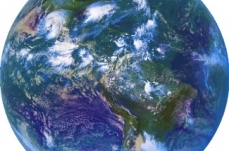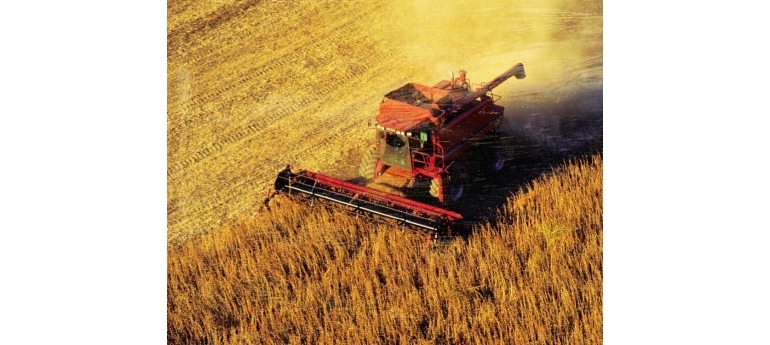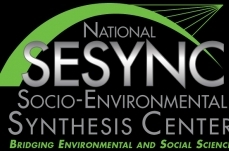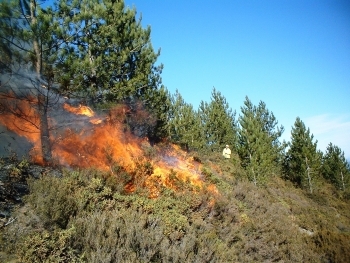Environmental & Resource Management (main)
From The Encyclopedia of Earth
(Redirected from Environmental & Resource Management)
Environmental & Resource Management
 National Ocean Policy Action Plan National Ocean Policy Action Plan draft requests public comments on actions Federal agencies will take to improve the health of oceans, coasts, and the Great Lakes.... More »
National Ocean Policy Action Plan National Ocean Policy Action Plan draft requests public comments on actions Federal agencies will take to improve the health of oceans, coasts, and the Great Lakes.... More »
 </span> Overgrazing (Environmental & Resource Management)
</span> Overgrazing (Environmental & Resource Management)Overgrazing is herbivory (animal comsumption of plants) that extracts an unsustainable yield of floral biomass from an ecosystem; however, the term is most often... More »
-
 Featured Article
Featured Article  Changes in the Landscape of Arctic Traditional...This article, written by Tim Lougheed*, appeared first in Environmental Health Perspectives—the peer-reviewed, open access journal of the National Institute of... More »
Changes in the Landscape of Arctic Traditional...This article, written by Tim Lougheed*, appeared first in Environmental Health Perspectives—the peer-reviewed, open access journal of the National Institute of... More »
-
 Featured Photo Gallery
Featured Photo Gallery  Agriculture I (Environmental & Resource Management)Humans began to cultivate food crops about 10,000 years ago. Prior to that time, hunter-gatherers secured their food as they traveled in the nearby environment. When they... More »
Agriculture I (Environmental & Resource Management)Humans began to cultivate food crops about 10,000 years ago. Prior to that time, hunter-gatherers secured their food as they traveled in the nearby environment. When they... More »
-
 Featured Article
Featured Article  The North American MosaicAn Overview of Key Environmental Issues The North American Agreement on Environmental Cooperation obliges the Secretariat of the Commission for Environmental Cooperation to... More »
The North American MosaicAn Overview of Key Environmental Issues The North American Agreement on Environmental Cooperation obliges the Secretariat of the Commission for Environmental Cooperation to... More »
-
 Featured News Article
Featured News Article  National forests and public health benefitsThe nation’s national forests can provide public health benefit. But how exactly do our national forests contribute to helping people develop a healthier... More »
National forests and public health benefitsThe nation’s national forests can provide public health benefit. But how exactly do our national forests contribute to helping people develop a healthier... More »
-
 Featured News Article
Featured News Article  Synthesizing Environmental Research ResultsNSF Grant Launches Center for Synthesizing Environmental and Related Research Results Award to develop solutions to today's environmental challenges To help identify... More »
Synthesizing Environmental Research ResultsNSF Grant Launches Center for Synthesizing Environmental and Related Research Results Award to develop solutions to today's environmental challenges To help identify... More »
Recently Updated
 Overfishing (Environmental & Resource Management) Last Updated on 2014-12-07 17:22:32 Overfishing is the human act of extracting aquatic (that is, marine and freshwater) fauna from natural water bodies at a rate greater than the reproductive and recruitment functions can replace that extraction. While there is some evidence that localized overfishing may have occurred in prehistoric eras, the bulk of overfishing has taken place in the last 150 years as the human population has expanded greatly and fishing technologies have enabled harvesting of many species at rates not imagined in earlier times. For over a century man's role in the depletion of certain regional fisheries has been noted. A functional definition of overfishing is sometimes given as the reduction in catch per unit effort by fishermen. Typically the concept of overfishing is linked to an individual aquatic species, and this issue is most often discussed within a specific marine or lacustrine province... More »
Overfishing (Environmental & Resource Management) Last Updated on 2014-12-07 17:22:32 Overfishing is the human act of extracting aquatic (that is, marine and freshwater) fauna from natural water bodies at a rate greater than the reproductive and recruitment functions can replace that extraction. While there is some evidence that localized overfishing may have occurred in prehistoric eras, the bulk of overfishing has taken place in the last 150 years as the human population has expanded greatly and fishing technologies have enabled harvesting of many species at rates not imagined in earlier times. For over a century man's role in the depletion of certain regional fisheries has been noted. A functional definition of overfishing is sometimes given as the reduction in catch per unit effort by fishermen. Typically the concept of overfishing is linked to an individual aquatic species, and this issue is most often discussed within a specific marine or lacustrine province... More »  Deforestation (Environmental & Resource Management) Last Updated on 2014-11-09 17:48:51 Deforestation is the destruction or clearing of forested lands, usually for the purposes of expanding agricultural land or for timber harvesting. When the process is conducted by clearcutting (removal of most or all of the canopy tree growth, leaving few or no live or dead trees standing) or when mass forest burning occurs, significant losses of habitat and biodiversity may result, including the erosion of biological community structure and the extinction of species. Deforestation is proceeding at a rapid pace in may areas of the world, especially in the tropical and boreal forest regions of the earth, with annual net loss of forests during the 1990s estimated in the range of nine to sixteen million hectares per annum. Large scale deforestation may have adverse impacts on biosequestration of atmospheric carbon dioxide, exacerbating greenhouse gas buildup, through the release of stored... More »
Deforestation (Environmental & Resource Management) Last Updated on 2014-11-09 17:48:51 Deforestation is the destruction or clearing of forested lands, usually for the purposes of expanding agricultural land or for timber harvesting. When the process is conducted by clearcutting (removal of most or all of the canopy tree growth, leaving few or no live or dead trees standing) or when mass forest burning occurs, significant losses of habitat and biodiversity may result, including the erosion of biological community structure and the extinction of species. Deforestation is proceeding at a rapid pace in may areas of the world, especially in the tropical and boreal forest regions of the earth, with annual net loss of forests during the 1990s estimated in the range of nine to sixteen million hectares per annum. Large scale deforestation may have adverse impacts on biosequestration of atmospheric carbon dioxide, exacerbating greenhouse gas buildup, through the release of stored... More »  Crop residue burning in the United States Last Updated on 2014-10-26 17:09:05 Crop residue burning occurs in all fifty states, including Alaska. In the contiguous United States nearly 20% of land is dedicated to crops. Residues from corn, cotton, rice, soybean, sugar cane, wheat, grass seed (e.g. Kentucky bluegrass seed), horticultural crops, and fallow fields are most commonly burned. Crop residue burning in the United States takes two forms: (1) the practice of burning residues post-harvest whereby the residues consist of a layer of ground-level senescent vegetation, and; (2) the practice of burning residue pre-harvest (primarily used for sugarcane harvesting), whereby leaves and other biomass are burned prior to the harvest. In addition to burning crop residues both during and after harvest, fire is also used in cropland areas for pest and weed control and to prepare fields for planting. Crop residue burning helps growers stay competitive as it is... More »
Crop residue burning in the United States Last Updated on 2014-10-26 17:09:05 Crop residue burning occurs in all fifty states, including Alaska. In the contiguous United States nearly 20% of land is dedicated to crops. Residues from corn, cotton, rice, soybean, sugar cane, wheat, grass seed (e.g. Kentucky bluegrass seed), horticultural crops, and fallow fields are most commonly burned. Crop residue burning in the United States takes two forms: (1) the practice of burning residues post-harvest whereby the residues consist of a layer of ground-level senescent vegetation, and; (2) the practice of burning residue pre-harvest (primarily used for sugarcane harvesting), whereby leaves and other biomass are burned prior to the harvest. In addition to burning crop residues both during and after harvest, fire is also used in cropland areas for pest and weed control and to prepare fields for planting. Crop residue burning helps growers stay competitive as it is... More »  Hawaiian Islands Humpback Whale National Marine Sanctuary Last Updated on 2014-07-10 16:22:15 The Hawaiian Islands Humpback Whale National Marine Sanctuary is one of 13 sanctuaries in the National Marine Sanctuary System created under the U.S. Marine Protection, Research and Sanctuaries Act. The sanctuary's goal is to promote comprehensive and coordinated management, research, education and long-term monitoring for the endangered humpback whale and its habitat. The Hawaiian Islands are the world's most isolated island archipelago, born of ancient volcanoes and inhabited by animals and plants derived from ancestors that found their way here over thousands of miles of ocean. According to scientists, the shallow, warm waters surrounding the main Hawaiian Islands constitute one of the world's most important habitats for the endangered humpback whale. Nearly two-thirds of the entire North Pacific population of humpback whales migrates to Hawai`i each winter. Here,... More »
Hawaiian Islands Humpback Whale National Marine Sanctuary Last Updated on 2014-07-10 16:22:15 The Hawaiian Islands Humpback Whale National Marine Sanctuary is one of 13 sanctuaries in the National Marine Sanctuary System created under the U.S. Marine Protection, Research and Sanctuaries Act. The sanctuary's goal is to promote comprehensive and coordinated management, research, education and long-term monitoring for the endangered humpback whale and its habitat. The Hawaiian Islands are the world's most isolated island archipelago, born of ancient volcanoes and inhabited by animals and plants derived from ancestors that found their way here over thousands of miles of ocean. According to scientists, the shallow, warm waters surrounding the main Hawaiian Islands constitute one of the world's most important habitats for the endangered humpback whale. Nearly two-thirds of the entire North Pacific population of humpback whales migrates to Hawai`i each winter. Here,... More »  Monte San Giorgio, Switzerland Last Updated on 2014-07-10 15:32:38 Monte San Giorgio (45°55' North and 8°57' East) is a World Heritage Site located in southernmost Switzerland, between the two southern arms of Lake Lugano in the canton of Ticino. The site has been subject to a number of local and regional protective measures. In summary: 1974: The Cantonal legislature decreed Cantonal authorization for and supervision of the search and collection of rocks, minerals and fossils on the mountain; decree amended 1975 and 1995; 1975: Cantonal regulation for the Protection of Flora and Fauna designated the whole mountain a Natural Protection zone; 1977: The entire site was listed on the Swiss Federal Inventories of Landscapes, Sites and Natural Monuments and of Heritage Sites of National Importance, based on articles 5 and 6 of the1966 Federal law on the Protection of Nature and Preservation of Natural Heritage; 1982: The Arzo... More »
Monte San Giorgio, Switzerland Last Updated on 2014-07-10 15:32:38 Monte San Giorgio (45°55' North and 8°57' East) is a World Heritage Site located in southernmost Switzerland, between the two southern arms of Lake Lugano in the canton of Ticino. The site has been subject to a number of local and regional protective measures. In summary: 1974: The Cantonal legislature decreed Cantonal authorization for and supervision of the search and collection of rocks, minerals and fossils on the mountain; decree amended 1975 and 1995; 1975: Cantonal regulation for the Protection of Flora and Fauna designated the whole mountain a Natural Protection zone; 1977: The entire site was listed on the Swiss Federal Inventories of Landscapes, Sites and Natural Monuments and of Heritage Sites of National Importance, based on articles 5 and 6 of the1966 Federal law on the Protection of Nature and Preservation of Natural Heritage; 1982: The Arzo... More » 
